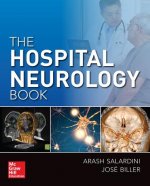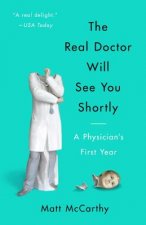
Code: 10788114
Patient-Centered Diagnosis
by Kashani-Sabet and Sagebiel Miller
Patient-centered diagnosis and prognosis focus on individual patients. Both rely on a methodology that generates individually tailored probabilistic predictions of a specified medical outcome that a particular patient may experien ... more
- Language:
 English
English - Binding: Paperback
- Number of pages: 226
Publisher: iUniverse, 2015
- More about this

21.63 €
RRP: 26.76 €
You save 5.14 €

In stock at our supplier
Shipping in 15 - 20 days
You might also like
-

Growth of the Soil
16.49 € -13 % -

Casa Cantata
40.24 € -

Boy Hero
12.87 € -2 % -

In the Court of the Yellow King
31.59 € -

Fort Valley
21.43 € -17 % -

Self, Ethics & Human Rights
75.47 € -

Uncivil Wars
53.33 €
Give this book as a present today
- Order book and choose Gift Order.
- We will send you book gift voucher at once. You can give it out to anyone.
- Book will be send to donee, nothing more to care about.
More about Patient-Centered Diagnosis
You get 54 loyalty points
 Book synopsis
Book synopsis
Patient-centered diagnosis and prognosis focus on individual patients. Both rely on a methodology that generates individually tailored probabilistic predictions of a specified medical outcome that a particular patient may experience. Predictions are based on observable diagnostic and prognostic factors. Because these predictions are both particular-outcome-specific and individual-patient-specific, achieving predictive accuracy poses a formidable challenge. Nevertheless, the patient-centered methodology (PCM) appears to produce more accurate individually tailored patient predictions than those typically achieved under current medical practice. PCM achieves its greater predictive accuracy by exploiting several analytical devices. 1. It redesigns and retools each successive stage of the analytical procedure to predict the particular future outcome that the targeted patient could experience. 2. It identifies the existence, the direction, the shape, and the magnitude of each diagnostic and prognostic factor's relationship to the particular outcome as that relationship pertains, specifically, to patients similar to the targeted patient. 3. It relies on detected interrelationships among separate diagnostic and prognostic factors and between both and the specified outcome to "fill in" missing observations so that an individually tailored probabilistic prediction is possible, even with incomplete patient data. From a physician's perspective, greater accuracy can facilitate better treatment selection choices and other improvements in patient management. From a patient's perspective, greater accuracy can facilitate more appropriate future planning and lifestyle choices. These benefits are illustrated by applying PCM to two diagnostic tests currently offered to cancer patients (sentinel lymph node biopsies and FDG-PET/CT scans) and to a novel diagnostic procedure (DSSA) recently developed to distinguish malignant melanomas from benign nevi (ordinary moles). PCM appears capable of reducing the cost of these current diagnostic tests by at least 40 percent and of increasing their triage efficiency by at least 66 percent. PCM, when incorporated within DSSA, also appears capable of achieving a sensitivity of 97 percent, a specificity of 98 percent, and a correct discrimination rate of 97 percent in distinguishing malignant melanomas from benign nevi.
 Book details
Book details
Book category Books in English Medicine Medicine: general issues Medical profession
21.63 €
- Full title: Patient-Centered Diagnosis
- Subtitle: Methodologies to Predict Individually Tailored Outcomes of Current Diagnostic Tests and to Create New Tests
- Author: Kashani-Sabet and Sagebiel Miller
- Language:
 English
English - Binding: Paperback
- Number of pages: 226
- EAN: 9781491779491
- ISBN: 9781491779491
- ID: 10788114
- Publisher: iUniverse
- Weight: 517 g
- Dimensions: 279 × 210 × 12 mm
- Date of publishing: 16. December 2015
Trending among others
-

The Ultimate IMAT Collection
44.67 € -19 % -

This is Going to Hurt
10.86 € -26 % -

Prescriber's Guide
113.21 € -

Medical Ethics: A Very Short Introduction
9.25 € -28 % -

Ultimate UCAT Collection
45.07 € -

Seminar of Jacques Lacan
22.43 € -12 % -

Empire of Trauma
37.93 € -15 % -

Cytomegalovirus
18.61 € -18 % -

Strangers At The Bedside
28.17 € -

Schizophrenia - Who Cares?
13.07 € -18 % -

Open Heart
24.24 € -21 % -

Service Fanatics: How to Build Superior Patient Experience the Cleveland Clinic Way
34.41 € -15 % -

Oxford Assess and Progress: Situational Judgement Test
43.06 € -

Practical Plans for Difficult Conversations in Medicine
38.53 € -

Forensic Psychiatry
247.45 € -

Skills for Communicating with Patients
57.45 € -2 % -

What Doctors Feel
15.39 € -19 % -

SJT: Pass the Situational Judgement Test
25.95 € -12 % -

Hospital Neurology Book
138.67 € -

Ethical Dilemmas in Genetics and Genetic Counseling
89.15 € -

Biomedical Ethics
53.33 € -

Ultimate UCAT Guide
24.85 € -18 % -

Before and After Loss
17.40 € -17 % -

Care in Practice
24.95 € -

Psychiatry Under the Influence
87.64 € -3 % -

It's All In The Delivery
16.49 € -4 % -

Real Doctor Will See You Shortly
13.88 € -23 % -

ABC of Learning and Teaching in Medicine 3e
39.94 € -

Hospice Ethics
81.10 € -

Pharmacy Ethics
51.52 € -

Understanding and Using Health Experiences
98.01 € -

Confidentiality and Mental Health
39.14 € -

Medical Ethics and Law
41.15 € -1 % -

Ethics in Medicine
32.39 € -

Ethics in Nursing Practice - A Guide to Ethical Decision Making 3e
68.72 € -

Schizophrenia
16.90 € -19 % -

Silent World of Doctor and Patient
38.03 € -4 % -

Definitive Guide to the OSCE
51.92 € -2 % -

Human Enhancement
54.94 € -

Time and Life Management for Medical Students and Residents
33.20 € -

How to Treat Persons
98.81 € -

How to Survive Being a Doctor
8.24 € -18 % -

Guinea Pig Zero
15.99 € -4 % -

Bedside Stories
17 € -4 % -

Empirical Ethics in Psychiatry
84.63 € -

Normative and Pragmatic Dimensions of Genetic Counseling
109.99 € -

Treatment Kind and Fair
25.75 € -

From Chance to Choice
57.05 € -

Essential Clinical Oral Biology
50.31 €
Collection points Bratislava a 2642 dalších
Copyright ©2008-24 najlacnejsie-knihy.sk All rights reservedPrivacyCookies


 15549 collection points
15549 collection points Delivery 2.99 €
Delivery 2.99 € 02/210 210 99 (8-15.30h)
02/210 210 99 (8-15.30h)